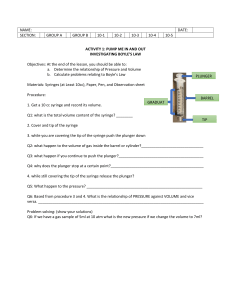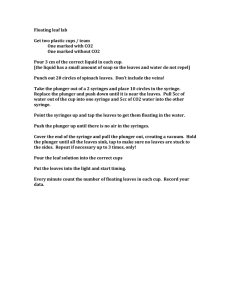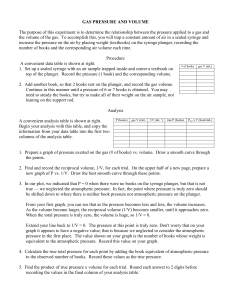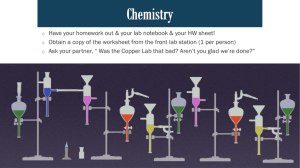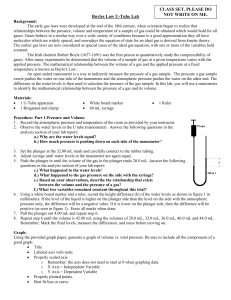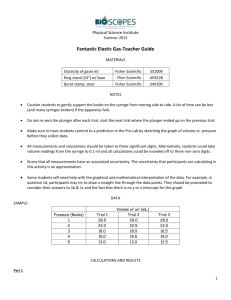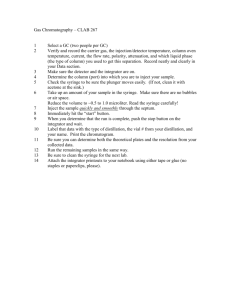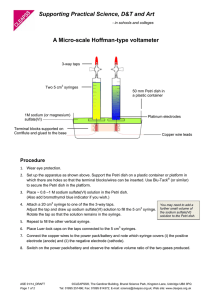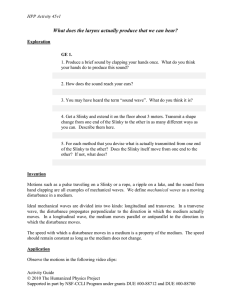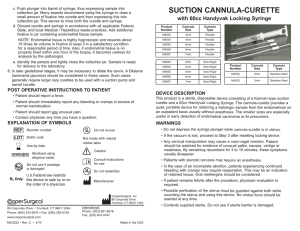PHY 1033C - Lab 8 Absolute Zero
advertisement
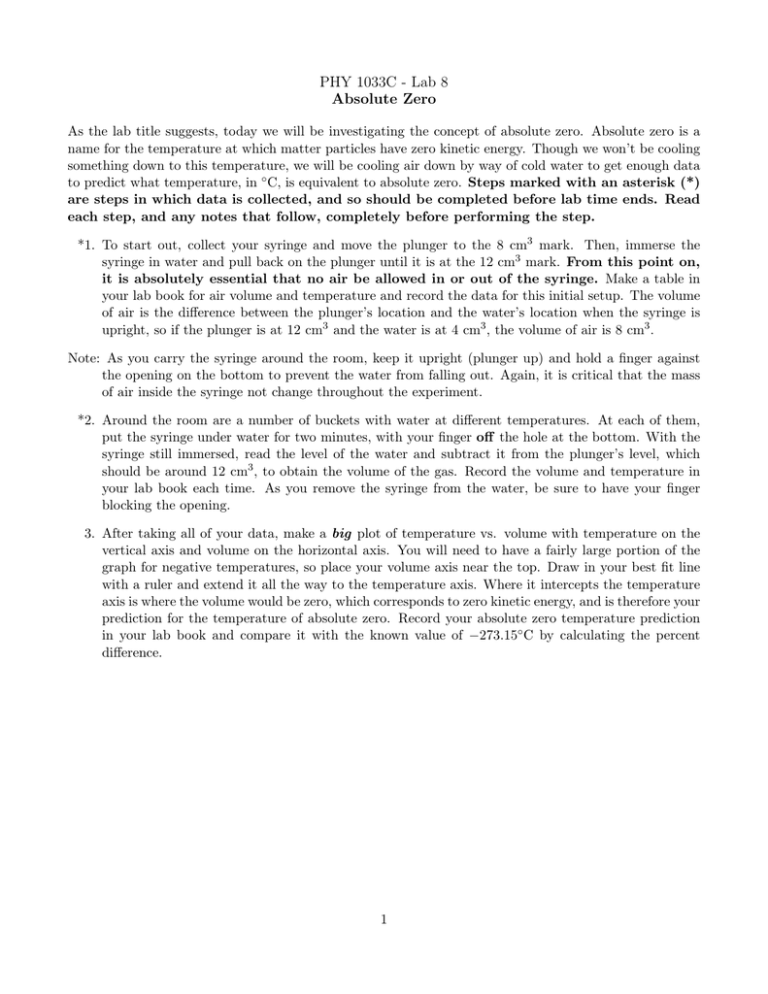
PHY 1033C - Lab 8 Absolute Zero As the lab title suggests, today we will be investigating the concept of absolute zero. Absolute zero is a name for the temperature at which matter particles have zero kinetic energy. Though we won’t be cooling something down to this temperature, we will be cooling air down by way of cold water to get enough data to predict what temperature, in ◦ C, is equivalent to absolute zero. Steps marked with an asterisk (*) are steps in which data is collected, and so should be completed before lab time ends. Read each step, and any notes that follow, completely before performing the step. *1. To start out, collect your syringe and move the plunger to the 8 cm3 mark. Then, immerse the syringe in water and pull back on the plunger until it is at the 12 cm3 mark. From this point on, it is absolutely essential that no air be allowed in or out of the syringe. Make a table in your lab book for air volume and temperature and record the data for this initial setup. The volume of air is the difference between the plunger’s location and the water’s location when the syringe is upright, so if the plunger is at 12 cm3 and the water is at 4 cm3 , the volume of air is 8 cm3 . Note: As you carry the syringe around the room, keep it upright (plunger up) and hold a finger against the opening on the bottom to prevent the water from falling out. Again, it is critical that the mass of air inside the syringe not change throughout the experiment. *2. Around the room are a number of buckets with water at different temperatures. At each of them, put the syringe under water for two minutes, with your finger off the hole at the bottom. With the syringe still immersed, read the level of the water and subtract it from the plunger’s level, which should be around 12 cm3 , to obtain the volume of the gas. Record the volume and temperature in your lab book each time. As you remove the syringe from the water, be sure to have your finger blocking the opening. 3. After taking all of your data, make a big plot of temperature vs. volume with temperature on the vertical axis and volume on the horizontal axis. You will need to have a fairly large portion of the graph for negative temperatures, so place your volume axis near the top. Draw in your best fit line with a ruler and extend it all the way to the temperature axis. Where it intercepts the temperature axis is where the volume would be zero, which corresponds to zero kinetic energy, and is therefore your prediction for the temperature of absolute zero. Record your absolute zero temperature prediction in your lab book and compare it with the known value of −273.15◦ C by calculating the percent difference. 1
